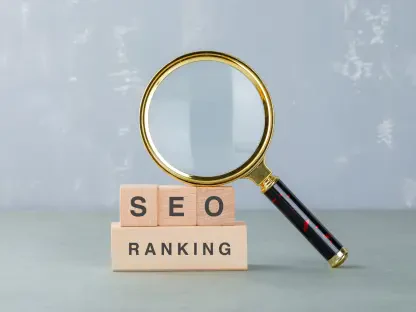Diving into the ever-evolving world of digital marketing, we’re thrilled to sit down with Anastasia Braitsik, a globally recognized leader in SEO, content marketing, and data analytics. With her extensive expertise, Anastasia has helped countless businesses navigate the complexities of online advertising. Today, we’re focusing on Google’s newly released “Understanding Product Pricing” guide for Shopping ads—a topic that’s critical for merchants aiming to stand out in a competitive digital marketplace. In this conversation, we’ll explore the guide’s core concepts, advanced tools, and the strategic importance of pricing transparency, as well as how these elements can transform ad performance and consumer trust.
How would you describe the purpose of Google’s new “Understanding Product Pricing” guide for merchants?
This guide is essentially a playbook for merchants to master pricing strategies within Google Shopping ads and free listings. Its main goal is to simplify the often complicated rules around pricing so businesses can present their products accurately and competitively. It helps merchants understand how to leverage pricing to boost visibility and attract clicks, whether through standard ads or free listings, by ensuring their pricing data is clear, accurate, and appealing to potential buyers.
Can you break down the fundamental pricing concepts outlined in the guide, like the difference between ‘price’ and ‘sale price’?
Absolutely. In Google’s terms, ‘price’ refers to the standard cost of a product without any discounts or promotions—it’s the baseline. ‘Sale price,’ on the other hand, is a temporary reduced price, often displayed alongside the original price to show the discount. This visual comparison, often highlighted through annotations, grabs attention and signals a deal to shoppers, making it a powerful tool for driving interest.
What’s the significance of price drop annotations, and how do they impact the shopping experience?
Price drop annotations are like little flags on ads that indicate a significant reduction in a product’s price. They make deals stand out immediately to shoppers scanning through listings. For the shopping experience, these annotations build excitement and urgency—when consumers see a clear price drop, they’re more likely to click and explore, knowing they’re getting a bargain. It’s a small but effective way to boost engagement.
Let’s talk about the advanced tools in the guide. How do automation features help merchants manage pricing more effectively?
Automation is a game-changer in the guide. Features like automatic price updates help resolve discrepancies by syncing the listed price with the actual website price, preventing errors that could frustrate customers or violate ad policies. Then there’s AI-powered automated discounts, which analyze inventory and market trends to apply discounts dynamically—great for clearing out stock without manual effort. These tools save time and keep pricing competitive.
For merchants selling globally, how does currency conversion fit into these pricing strategies?
Currency conversion is a critical feature for international sales. It automatically adjusts the displayed price based on the shopper’s local currency, making the product’s cost clear and relevant no matter where they are. This removes a barrier for global customers who might otherwise hesitate due to confusion over exchange rates. For merchants, it’s a seamless way to expand their reach and make their ads more accessible worldwide.
The guide mentions special pricing programs. Can you explain how regional pricing can be a strategic advantage?
Regional pricing allows merchants to set different prices for the same product based on specific geographic areas. This can be a huge advantage because it lets businesses account for local purchasing power, competition, or shipping costs. For example, a merchant might lower prices in a highly competitive market to attract more buyers or adjust for currency differences. It’s all about tailoring the offer to fit the local context, which can significantly improve conversion rates.
How do flexible payment options, like displaying subscription costs or installments, benefit both merchants and shoppers?
Flexible payment options are fantastic for making products more approachable. By showcasing subscription costs or breaking down payments into installments directly in ads or listings, merchants can appeal to a wider audience who might not be able to pay upfront. For shoppers, this transparency offers choice and affordability, increasing the likelihood of a purchase. For merchants, it’s a way to boost sales by reducing financial friction and building trust through clear terms.
Why do you think pricing plays such a pivotal role in the success of Shopping ads?
Pricing is front and center in Shopping ads because it’s often the first thing a consumer notices. It’s not just about being the cheapest; it’s about clarity and perceived value. When pricing is accurate and transparent—whether it’s a sale, promotion, or installment option—it directly influences click-through rates and conversions. A well-presented price builds trust, while errors or vagueness can drive customers away. In such a competitive space, getting pricing right is often the difference between a click and a scroll.
What’s your forecast for the future of pricing strategies in digital advertising, especially with tools like these becoming more advanced?
I believe we’re heading toward even more personalized and dynamic pricing strategies in digital advertising. With advancements in AI and automation, merchants will be able to tailor prices not just by region but by individual user behavior, preferences, and real-time market shifts. Tools like automated discounts and currency conversion will become more sophisticated, integrating predictive analytics to anticipate demand and optimize pricing on the fly. For merchants who adapt, this could mean unprecedented levels of competitiveness and customer satisfaction, but it’ll also require a deep understanding of data to avoid overwhelming consumers with constant changes. The future is exciting, but it’ll demand balance and strategy.









